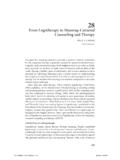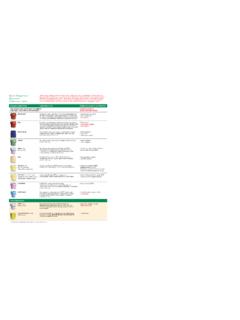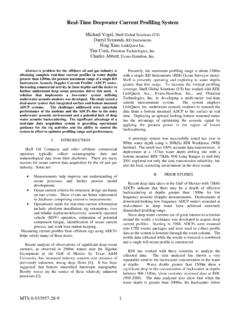Transcription of The Origins of Christianity and the Quest for the ...
1 The Origins of Christianity and the Quest for the Historical Jesus Christ By Acharya Murdock Please feel free to print out and distribute this ebook in any way, both online and offline! Table of Contents Table of Contents 2 The Origins of Christianity and the Quest for the Historical Jesus Christ 3 Introduction 3 The Controversy 3 History and Positions of the Debate 3 "Pious Fraud" 4 The Proof 4 The Gnostics 5 Biblical Sources 5 Non-Biblical Sources 6 The Characters 7 The Major Players 9 Buddha 9 Horus of Egypt 12 Mithra, Sun God of Persia 13 Krishna of India 14 Prometheus of Greece 18 The Creation of a Myth 18 The "Son" of God is the "Sun" of God 19 Etymology Tells the Story 20 The Book of Revelation is Egyptian and Zoroastrian 22 The "Patriarchs" and "Saints" are the Gods of Other Cultures 22 The "Disciples" are the Signs of the Zodiac 23 Was Jesus an Essene Master?
2 24 Qumran is Not an Essene Community 24 Was the New Testament Composed by Therapeuts? 25 Conclusion 25 Bibliography 26 The Origins of Christianity and the Quest for the Historical Jesus Christ by Acharya Murdock Introduction Around the world over the centuries, much has been written about religion, its meaning, its relevance and contribution to humanity. In the West particularly, sizable tomes have been composed speculating upon the nature and historical background of one of the main characters of Western religions, Jesus Christ. Many have tried to dig into the precious few clues as to Jesus's identity and come up with a biographical sketch that either bolsters faith or reveals a more human side of this godman to which we can all relate.
3 Obviously, considering the time and energy spent on them, the subjects of Christianity and its legendary founder are very important to the Western mind and culture, and increasingly to the rest of the world as well. The Controversy Despite all of this literature continuously being cranked out and the significance of the issue, in the public at large there remains a serious lack of formal and broad education regarding religion and mythology, and most individuals are highly uninformed in this area. Concerning the issue of Christianity , for example, the majority of people are taught in most schools and churches that Jesus Christ was an actual historical figure and that the only controversy regarding him is that some people accept him as the Son of God and the Messiah, while others do not.
4 However, whereas this is the raging debate most evident in this field today, it is not the most important. Shocking as it may seem to the general populace, the most enduring and profound controversy in this subject is whether or not a person named Jesus Christ ever really existed. Although this debate may not be evident from publications readily found in popular bookstores, when one examines this issue closely, one will find a tremendous volume of literature that demonstrates, logically and intelligently, time and again that Jesus Christ is a mythological character along the same lines as the Greek, Roman, Egyptian, Sumerian, Phoenician, Indian or other godmen, who are all presently accepted as myths rather than historical figures.
5 Delving deeply into this large body of work, one uncovers evidence that the Jesus character is based upon much older myths and heroes from around the globe. One discovers that this story is not, therefore, a historical representation of a Jewish rebel carpenter who had physical incarnation in the Levant 2,000 years ago. In other words, it has been demonstrated continually for centuries that this character, Jesus Christ, was invented and did not depict a real person who was either the "son of God" or was "evemeristically" made into a superhuman by enthusiastic followers.
6 History and Positions of the Debate This controversy has existed from the very beginning, and the writings of the Church fathers themselves reveal that they were constantly forced by the Pagan intelligentsia to defend what the non-Christians and other Christians ("heretics") alike saw as a preposterous and fabricated yarn with absolutely no evidence of it ever having taken place in history. As Rev. Dr. Robert Taylor says, "And from the apostolic age downwards, in a never interrupted succession, but never so strongly and emphatically as in the most primitive times, was the Acharya Murdock The Origins of Christianity 2011 4 existence of Christ as a man most strenuously denied.
7 "1 According to these learned dissenters, the New Testament could rightly be called, "Gospel Fictions."2 "Pious Fraud" Those individuals (or their spiritual heirs) who concocted some of the hundreds of "alternative" gospels and epistles being kicked about during the first several centuries AD/CE even confirmed that they (or their compadres) had forged the documents. Forgery during the first centuries of the Church's existence was admittedly rampant, so common in fact that a new phrase was coined to describe it: "pious fraud."3 Such prevarication is admitted repeatedly in the Catholic Encyclopedia, as shown by Joseph Wheless's extensive analysis in Forgery in Some of the "great" Church fathers, such as historian Eusebius (c.)
8 263-339), were determined by their own peers to be unbelievable liars who regularly wrote their own fictions of what "the Lord" said and did during his alleged sojourn upon the earth. According to renowned historian Edward Gibbon, in one of his works, Evangelical Preparation (bk. 12), Eusebius provides a handy chapter entitled, "How it may be lawful and fitting to use falsehood as a medicine, and for the benefit of those who want to be deceived."5 Wheless calls Church fathers Justin Martyr (c. 100-c. 165), Eusebius and Tertullian (c. 160 c. 220) "three luminous liars,"6 while Bronson Keeler concludes, "The early Christian fathers were extremely ignorant and superstitious; and they were singularly incompetent to deal with the supernatural.
9 "7 In addition, of the dozens of gospels, those once considered canonical or genuine were later rejected as "apocryphal" or spurious, and vice versa. So much for the "inerrant Word of God" and "infallible" Church! The confusion exists because the Christian plagiarists over the centuries were attempting to amalgamate and fuse practically every myth, fairytale, legend, doctrine or bit of wisdom they could "borrow" from the innumerable different mystery religions and philosophies that existed at the time. In doing so, they forged, interpolated, mutilated, changed, and rewrote these texts for centuries.
10 The Proof The assertion that Jesus is a myth can be demonstrated not only through the works of dissenters and "Pagans" who knew the truth and who were viciously refuted or murdered for their battle against the Christian priests and Church fathers fooling the masses with their fictions but also through the statements of various Christians themselves who disclosed that they knew Jesus Christ was a myth founded upon more ancient deities located throughout the known ancient world. Illustrating this contention, in his play from 1564, Bishop of Ossory John Bale (1495-1563) appears to be suggesting that Pope Leo X (1475-1521) was privy to the truth based on his high rank, when the bishop recounts an alleged exchange between Cardinal 1 Taylor, 253.









